Weak density
Author(s)
BNR architectes
Thibaud Babled (FR)
Armand Nouvet (FR)
Marc Reynaud (FR)
Client(s)
SEMIS (Société d'Economie Mixte Immobilière de la Saintonge)
Competition team
Thibaud Babled (FR)
Laurent Berger (FR)
Armand Nouvet (FR)
Marc Reynaud (FR)
Cyrille Véran (FR)
Europan 3 Saintes
winner
1994
The project proposes a large underground car park, which liberates the square, creating a large public space above the river. The neighbouring block is improved by individual renovations, of mixed uses, on the perimeter, and a new architectural operation, which respects its individual morphology (parcels in strips, gardens, walls, alleys). Long narrow transversal passages extend the public space into the interior of the block, providing access to the new private houses (low residences with an entrance from the patio which faces on to the alleyway and high, two-storey houses with their entrance from the gardens).
The concept developed by the BNR team was based on the desire to retain the unitary nature of the whole main block, while increasing density at its centre by reactivating a network of alleyways, with alternating gardens and buildings.
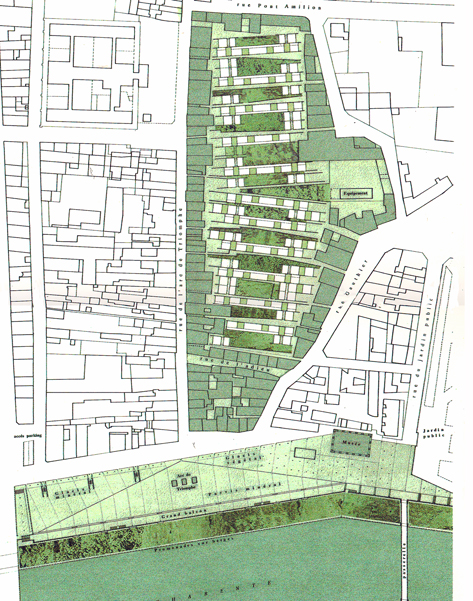


1995-1998
In 1995, after opting in favour of the prize-winning project, the city encountered problems in setting up a consistent process of construction. A housing developer (SEMIS) became the operator of the scheme. The strip layout of the private plots facilitated land acquisition, but the overall perimeter remained unstable, leading to uncertainty as to the precise scope of the scheme. A gradual procedure of plot by plot negotiation rather than compulsory purchase resulted in a greatly prolonged land acquisition process (approximately 5 years).
Nonetheless, the urban scheme and studies were pursued despite these uncertainties. There have been changes such as the removal of the green public spaces within the block, the obligation to raise buildings, due to flood risks in the sector, or the integration of parking on the street and not underground. Changes have also been made to typologies in favour of rehabilitation. But the idea of footpath in the heart of the block has been preserved.
The architect of “bâtiments de France” required to preserve the exact route of the existing alleys to rebuild the old stone walls and has not privided the flat roofs for the houses with patios in the protected area. So the team changed the linear shape of the houses with patios and their terraced roofs had to be replaced with tiled roofs.
Further constraints were added during the design process, in particular relating to fire safety within the block.
It was not until 1997 that the developer acquired the primary building plots and finalised all the administrative documents for the operation. A phasing plan was devised to assess the possibility of dividing the operation into different parts so that construction could be staggered. In 1998, the contract for the construction of the whole operation – buildings and green spaces – went to the BNR team.
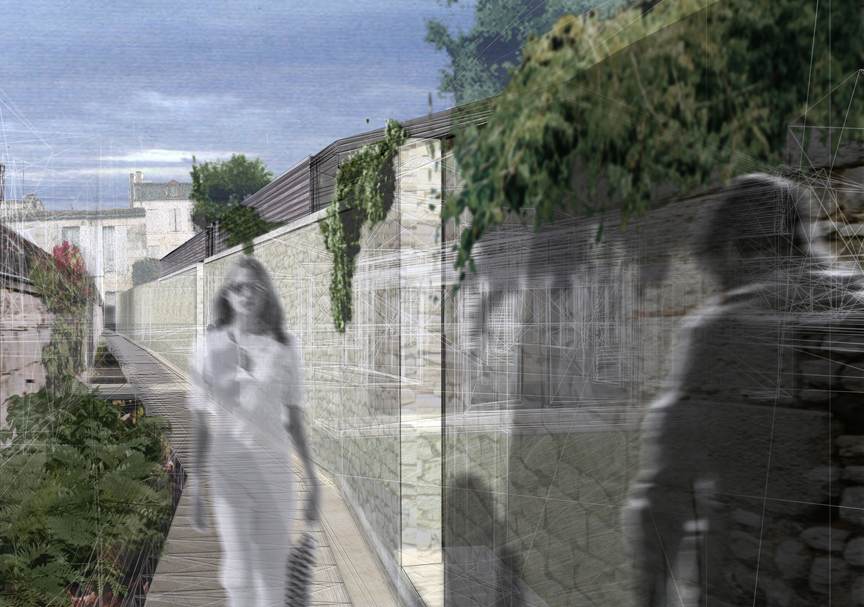
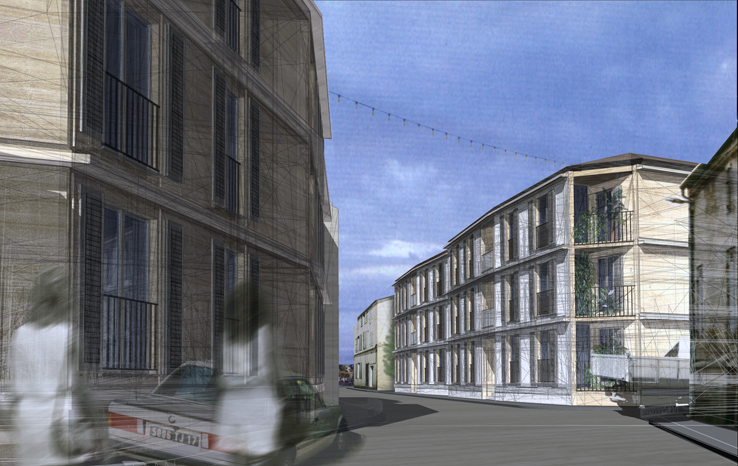
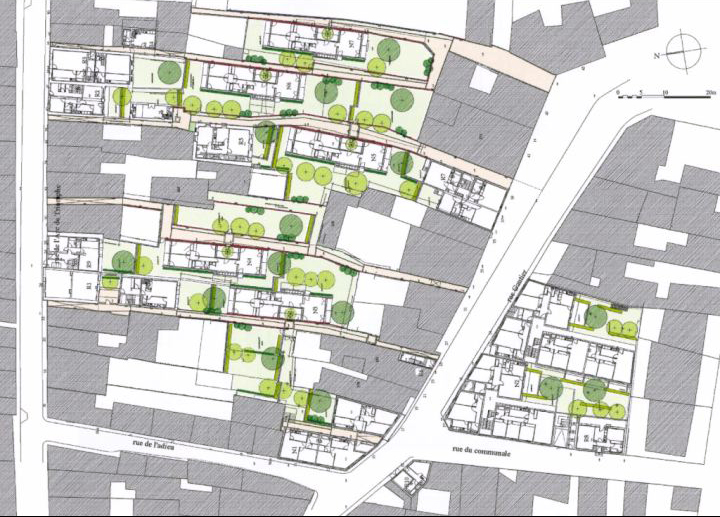
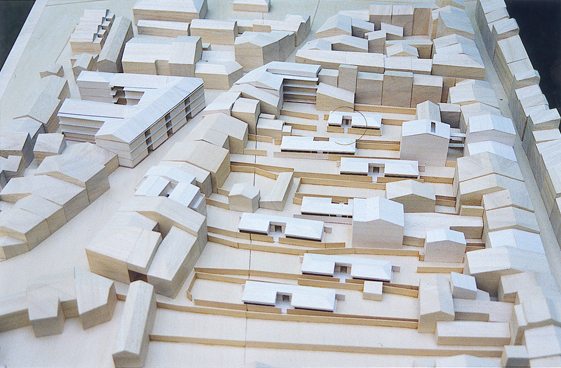
2000-2005
There were also problems in the construction phase brought about by the acquisition – or failure to acquire – new land, all of which constantly modified the construction project. There were also continual negotiations with the heritage agencies on the definition of the alley walls and on the shape of the patio houses.
In the end, 29 demolition permits and 11 building permits were required for the whole project. Demolition took place between July 2000 and February 2001, but the frequent floods in the region caused delays.
Work began in earnest in 2002 with the restoration of the houses on the edge of the block, which made it possible to create access passages to the interior and housing units with atypical volumes (duplex, or even triplex). The alley walls were built using stones from the demolition and the houses with patio were built above. The main block was completed in 2003 but work still continues on several adjacent plots to complete the programme with denser communal housing. In all, 64 housing units and 2 shops are planned.
Despite the unusual length of the operation, all the stakeholders are now highly satisfied with the project, which incorporates both old and new, and reconciles the desire to live in the historical city with a modern lifestyle.
The inhabitants seem greatly to appreciate the revitalisation of this district on the edge of the centre, and the alternative it provides to the suburban housing estate.
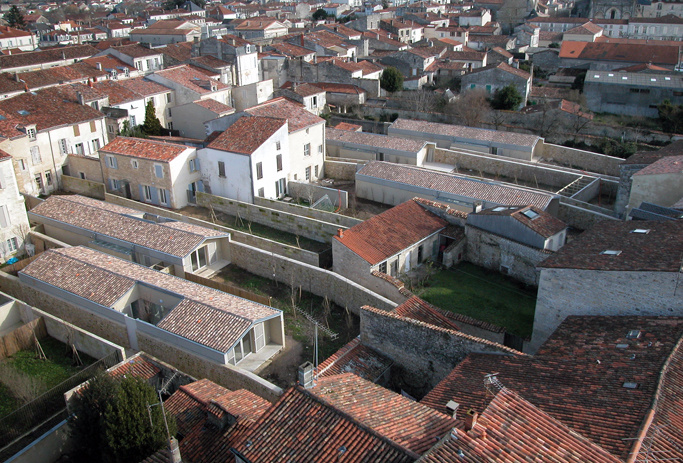
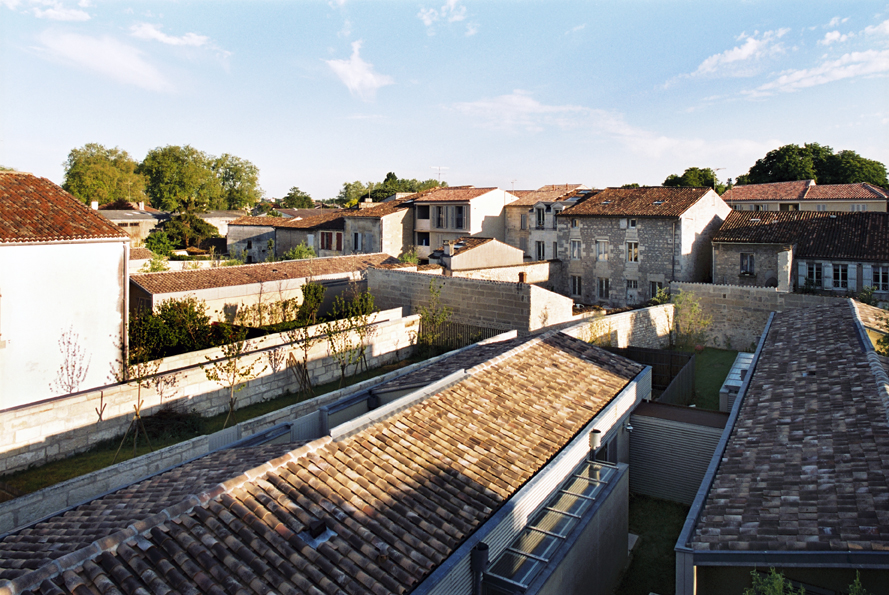
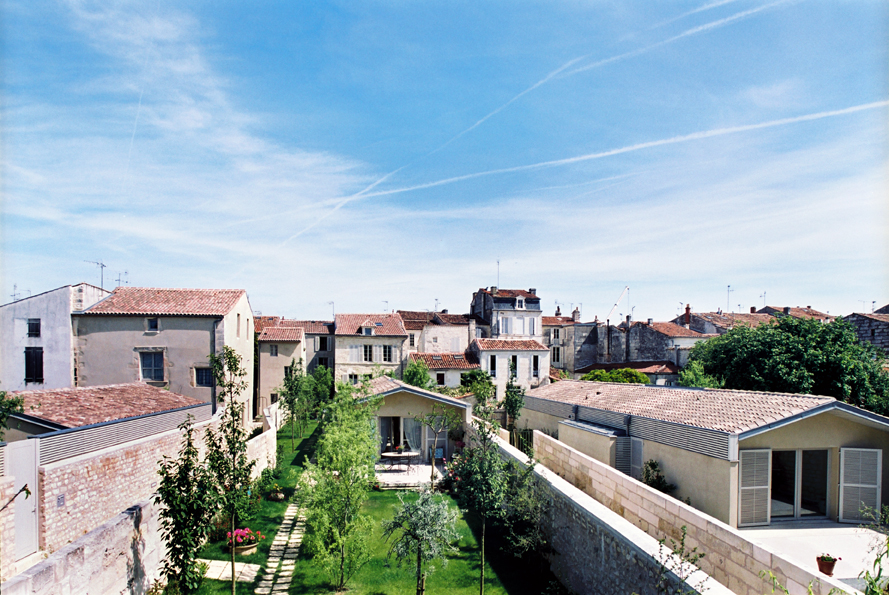
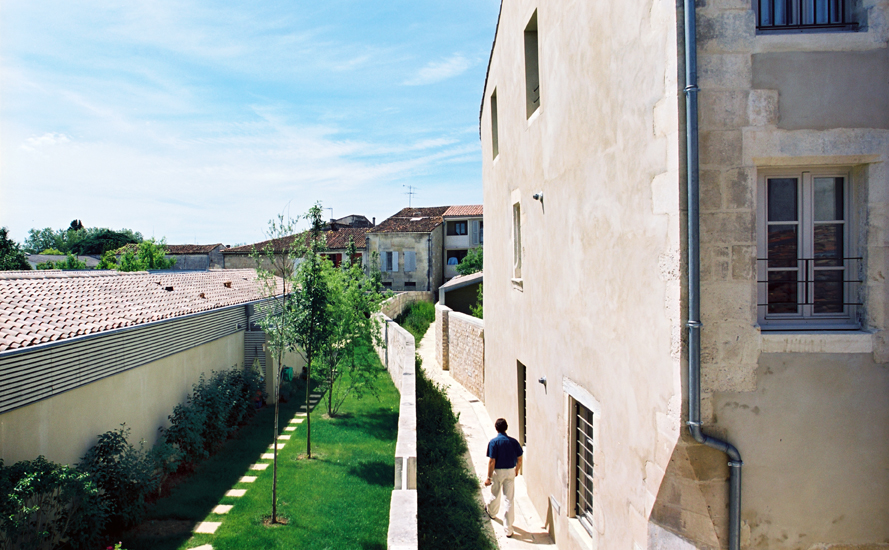
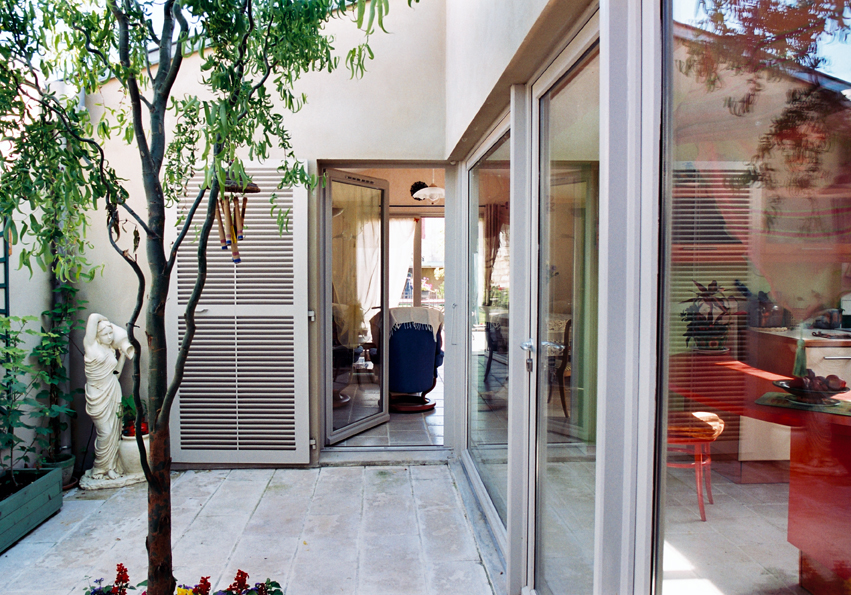
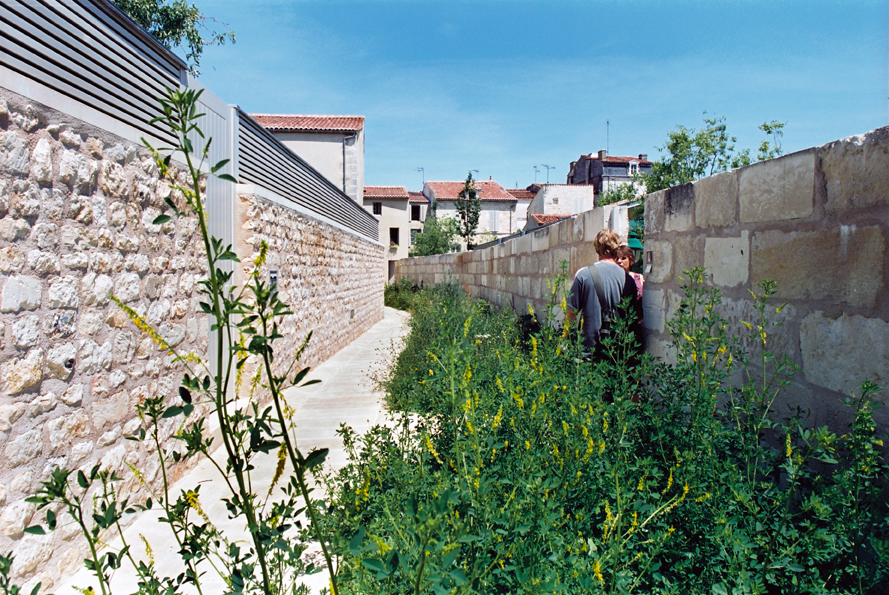
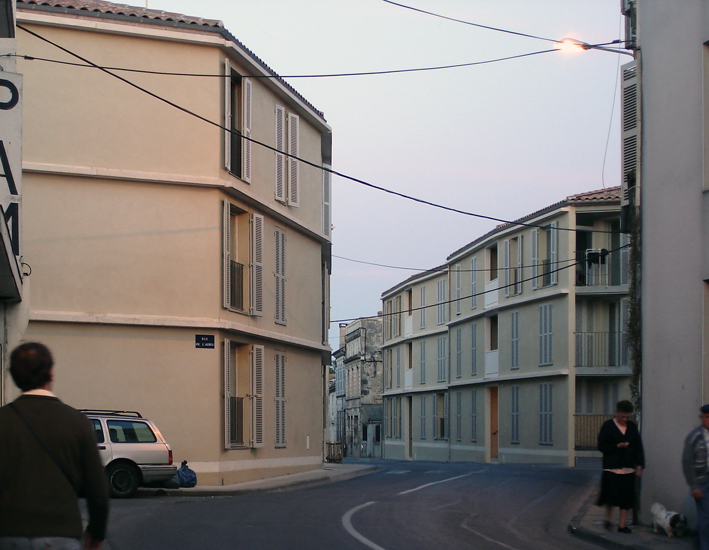
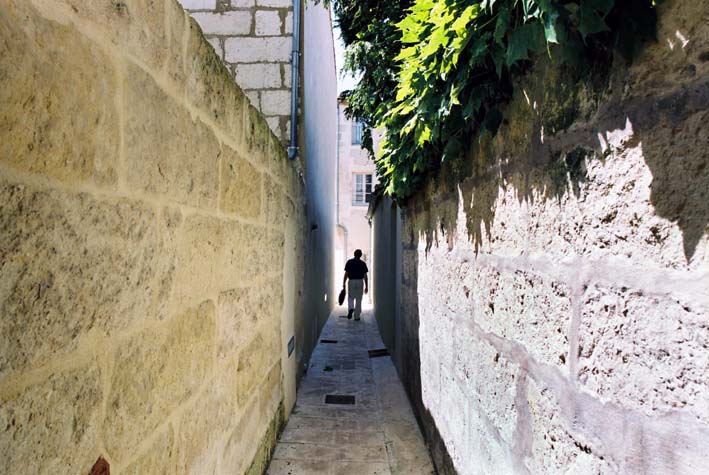
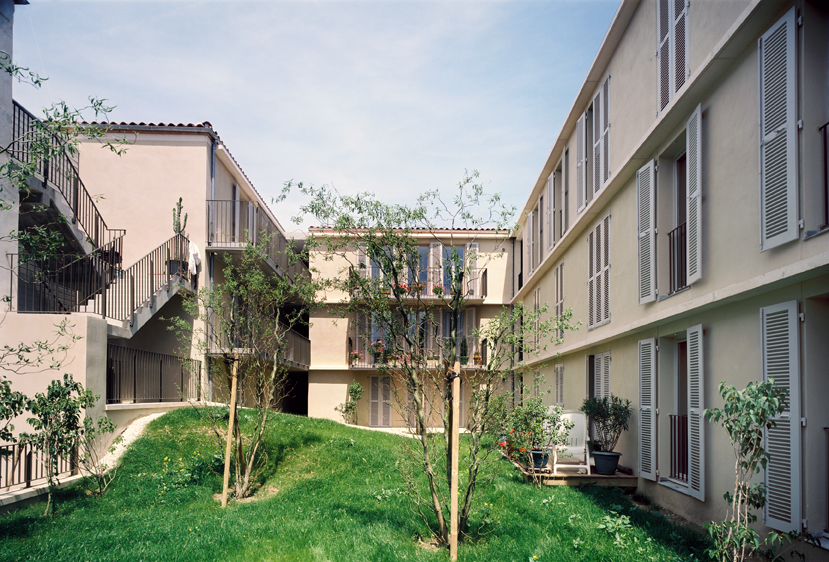
Site informations
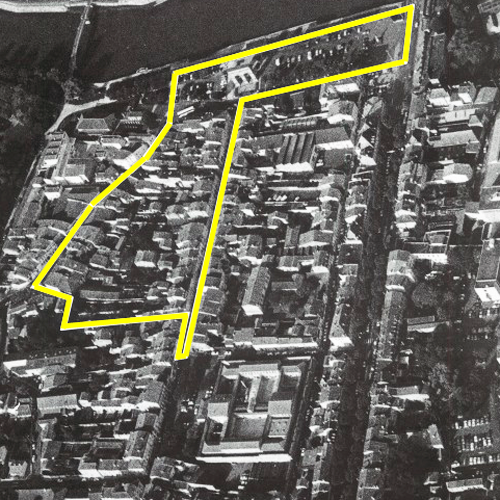
Saintes
Synthetic site file EN